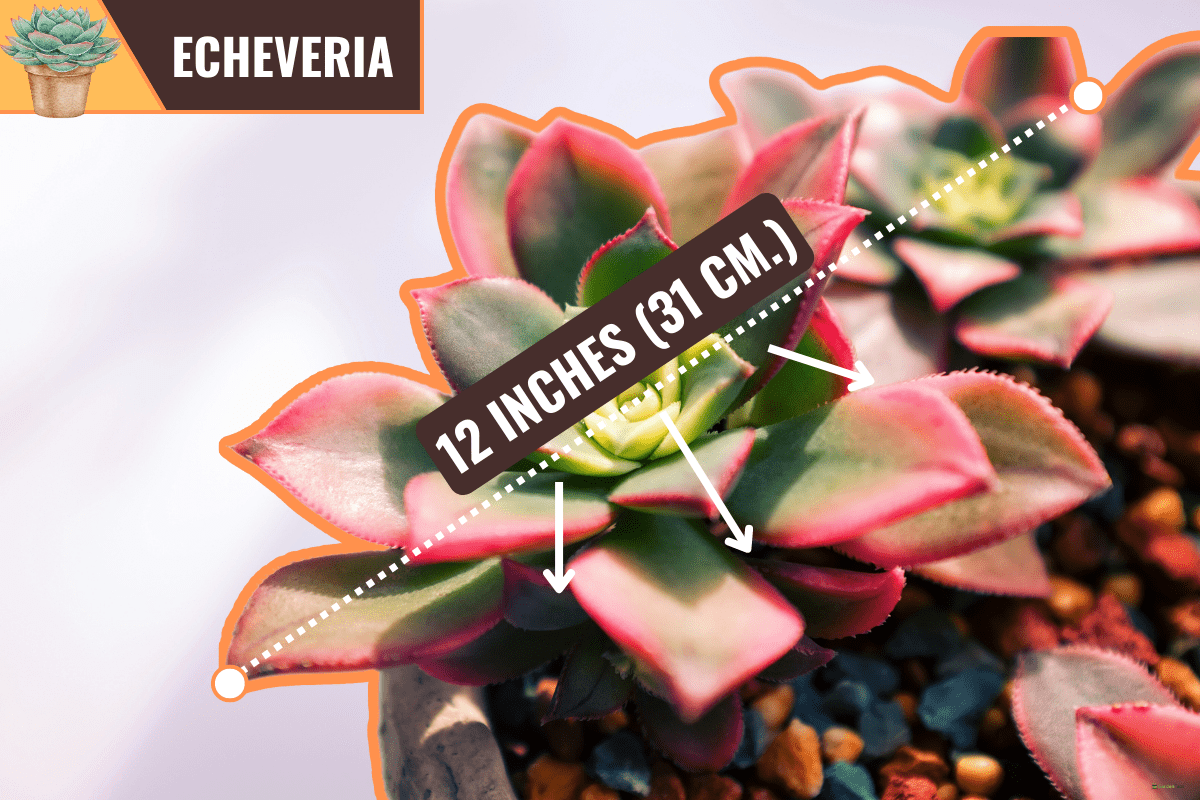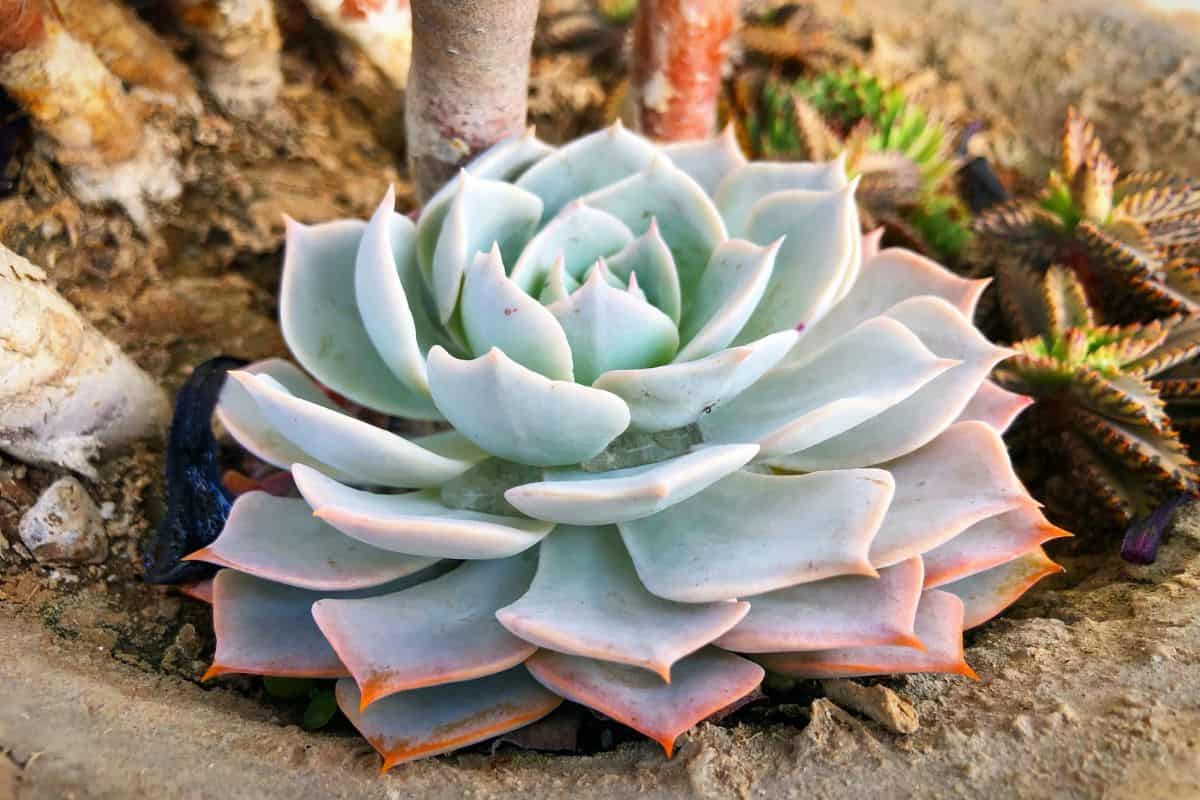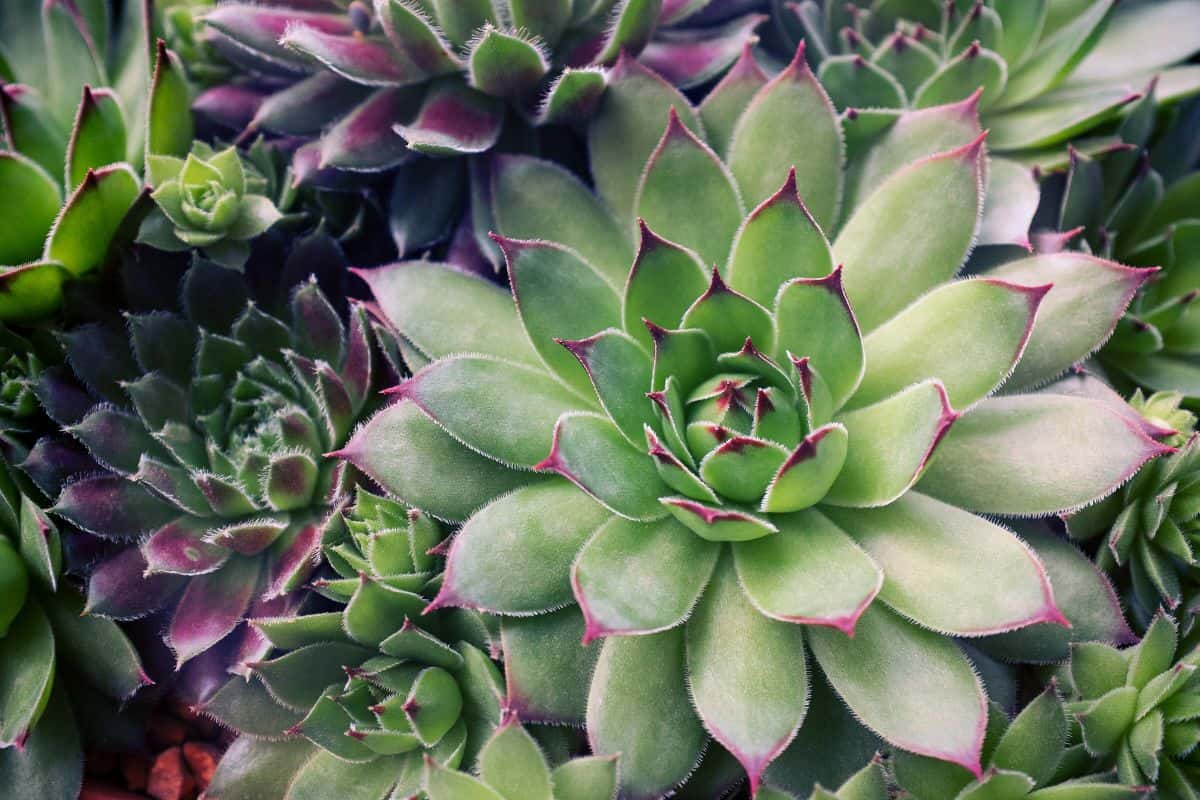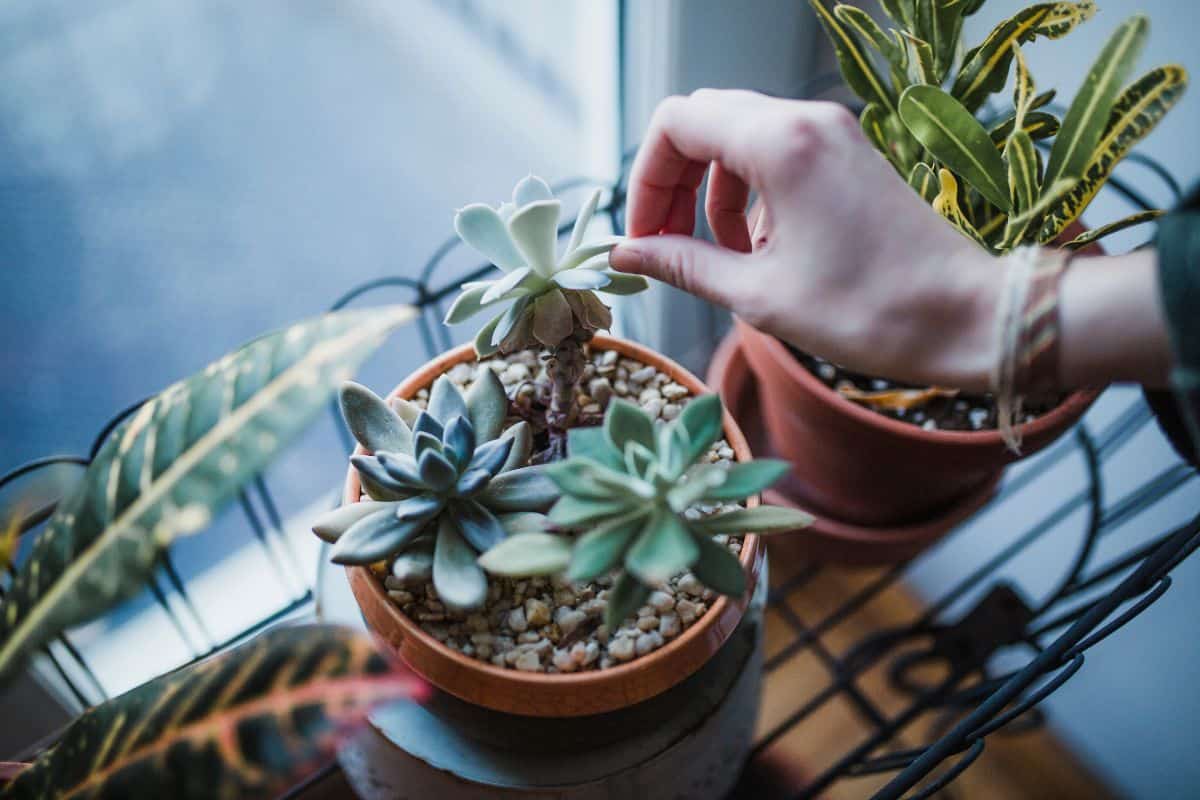Choosing the right plant and spot in your garden can sometimes be tricky. Do you want to grow echeveria but have no clue how big one typically becomes? Does this plant species need tons of space to grow and flourish?
Well, we've done plenty of research and have the answers for you below!
If you want to make space for echeveria, you don't need much. This succulent generally reaches around 12 inches (31 cm.) in height or spread. Therefore, your plant's pot or ground space doesn't need to be expansive for it to grow.
With that said, in certain conditions with lower light, your echeveria may grow upwards to reach the nearby sun, making it look larger/lankier.
As we start this article, we will cover all things echeveria and discuss how big one should become. Whether you're new to succulents, have an echeveria at home, or have additional questions, we're here to help. With that said, let's dive right into this topic!

Does Echeveria Grow Big?
No. Echeveria won't typically become very big. As we mentioned, these succulents tend to stay around a foot tall/wide upon full maturity.
Therefore, you don't need to give it much room to grow, as it won't get bigger than 12 inches. With that said, echeveria can sometimes grow into more of a shrub: which means it can reach upwards of two feet wide and tall.
Again, this isn't common, but it is possible in specific growing conditions. Even though your plant may grow quickly throughout the spring and summer, that doesn't mean it will become expansive.
On top of that, you also don't want to choose a super tiny echeveria variety (like haworthia fasciata) as they can't physically become more than a few inches tall or wide.
What Is The Biggest Echeveria Variety?

For anyone who wants to plant a larger-sized echeveria in their landscape, we recommend the 'echeveria gibbiflora' variety.
This larger succulent follows more of a cabbage growth style and resembles the crop quite a bit. On top of those physical resemblances, this echeveria variety is the largest one you can find.
So, it should grow roughly 3.3 feet, about 2.3 feet taller than your everyday echeveria. Again, it's possible to have yours become smaller or larger depending on the plant and conditions, so everyone is different.
Regardless, this echeveria is sure to impress guests and might even trick them into thinking you have a cabbage plant growing in your desert garden!
Moreover, you can also grow echeveria gibbiflora alongside smaller succulents, as long as they all have similar ground/water preferences.
Echeveria Gibbiflora Hybrid
This echeveria gibbiflora succulent comes in a four-inch pot, usually ships out within a few days, and can grow indoors and outside.
Follow this link to see it on Amazon.
Is Echeveria Fast Growing?
Yes! This succulent species is one of the faster-growing options for desert landscaping. Typically, an echeveria plant will grow between 6-8 inches annually until it reaches its mature size.
Again, echeveria isn't a large plant. So, even if yours grows 6-8 inches from a tiny plant, it won't usually exceed that 12-inch mature height/spread.
According to pros, one of the faster-growing echeveria varieties is the 'Echeveria Prolifica,' which can reach full size in as little as one calendar year.
The Apus, Blue Atoll, Orion, and Blue Metal echeveria varieties should also grow and multiply relatively fast. So, even though your basic echeveria will grow rather quickly, some types can mature even faster.
Growing speed also relies on good, stable conditions for your echeveria, so keep that in mind.
How Do You Make Echeveria Grow Faster?
If you don't see fast enough growth in an echeveria for your liking, there are steps to take. Generally, an easy way to encourage faster echeveria growth is to spread their roots periodically.
Although this sounds damaging, going into your pot or the ground where your succulent is and spreading its roots can help them further establish and send signals to the rest of your succulent that it's time to grow.
According to experts, spreading echeveria's roots can allow the plant to absorb more from the soil, ultimately stimulating a faster, healthier growth rate.
Of course, you don't need to do this often. Ideally, try and spread your echeveria roots once or twice per year until it reaches mature size.
As we said, your plant may only become 12 inches tall and wide. Spreading the roots afterward can hurt your succulent rather than help it, so keep this in mind while gardening.
This goes for most succulents, not just echeveria.
Do Succulents Usually Stay Small?

Overall, succulents do tend to remain small through maturity. As we mentioned, echeveria may only become one foot tall and wide upon maturity, which is very tiny in the bigger scheme.
Generally, succulent species stay between one and three feet tall. Therefore, you can find them throughout many desert landscapes, often growing in clusters.
When it comes to these desert-friendly options, succulents aren't large-scale plants but rather a ground filler/cover. Hence, you usually see echeveria growing alongside other succulents, all creating a gorgeous landscape closer to the ground.
Of course, that doesn't mean you can't make echeveria or other succulents the main draw of attention in a garden, but they aren't going to be as easy to spot.
Do Succulents Grow Bigger In Bigger Pots?
Yes and no. Most times, a succulent will grow as big as its environment permits. However, that's also according to the varieties/species' average mature sizing, so every succulent has a set limit.
For example, planting echeveria in a larger pot might grow around 1-1.5 feet tall. In contrast, if you plant the same variety in a smaller, more constructed pot/planter, it could reach much less than those 12 inches.
But regardless, if a succulent only grow to a few feet tall and you give it plenty of room, that doesn't mean it will become a monolith in your garden.
You can also try choosing larger succulent species if you want something more substantial, so this can come down to which plant you grow as well.
Where Is The Best Place To Grow Echeveria?
You want to grow echeveria somewhere with great sun/light exposure. Whether this plant is inside or out in your garden, you need to supply it with plenty of sunshine.
Like most succulents and desert-growing plants, echeveria depends on warmth to survive. With that said, echeveria likes a bit of afternoon shade outdoors because the sun can become overpowering.
Especially throughout desert regions, the sun can become too powerful for echeveria. If this happens, your succulent could burn at the tips of its leaves, eventually dying from dehydration if you neglect it.
One key point is that echeveria needs roughly six hours of full sun daily.
So, if your plant is outside or indoors and doesn't receive that many hours: it could try and spread out, looking for more energy from nearby light.
On top of sun needs, echeveria also prefers well-draining soil. The worst thing for echeveria is waterlogged ground, which is common in clay environments.
To remedy this, use fresh compost around your succulents to improve soil drainage.
Can I Grow Echeveria Indoors?
Yes! If you give your plant plenty of sunlight, it will grow indoors. Usually, echeveria thrives inside and tends to prefer stable year-round conditions.
However, growing echeveria indoors can be tricky if your home doesn't face the sun. As we covered, this desert plant needs at least six hours of direct sunlight daily.
So, if the window you have your succulent in doesn't get that much sunlight, there could be issues.
On top of that, echeveria inside is more prone to overwatering than outdoor plants. That means you will need to monitor your succulent's water and sun intake more closely, to prevent a dead or dying plant.
That said, many garden pros claim that growing echeveria in sunrooms, conservatories, and rooms that receive all-day sunlight can be beneficial and successful long-term.
How Long Does Echeveria Live?

An interesting detail about echeveria is that their lifespan can be incredibly hard to predict. Generally, this succulent species lives between three years and several decades, depending on the variety, care, and growing conditions.
Therefore, one person's echeveria plant may live in their garden for 10+ years, while another gardener's plant might survive 2-3.
However, giving echeveria sunlight and nutrient-rich, well-draining soil can help extend their average lifespan. Like most plants, the better an echeveria's daily conditions:, the longer it will survive.
On top of that, echeveria outdoors tends to outlive indoor plants, so that can also be something to consider when choosing a location.
Is Echeveria Easy To Grow?

Yes! Growing echeveria should be pretty simple. Since this succulent species is so fast-growing and stays tiny, you don't need to worry about extensive maintenance.
As we mentioned, echeveria can reach mature sizing within a couple of years. Therefore, you won't spend decades waiting on your plant to grow to its full potential.
Furthermore, this succulent doesn't need much water or TLC to thrive, so it's better to leave it alone and allow it enough space to flourish in your garden.
To Finish Things Up
Whether you have echeveria in your landscaping or want to start growing succulents, it's always good to know how big they'll become. We found that echeveria typically grows about 12 inches tall and wide upon full maturity.
So, this plant species will not take up much space in your garden and doesn't typically exceed 3.3 feet (if you choose a larger variety).
Furthermore, if you want to see your echeveria grow faster, you can try spreading its roots once a year, which can promote nutrient intake and speed up the maturity process.
Made it to the end? Check out these helpful related plant posts below!
Why Is My Echeveria Dying? [With Tips On What To Do About It]
11 Types Of Echeveria You Should Consider For Your Succulent Garden

